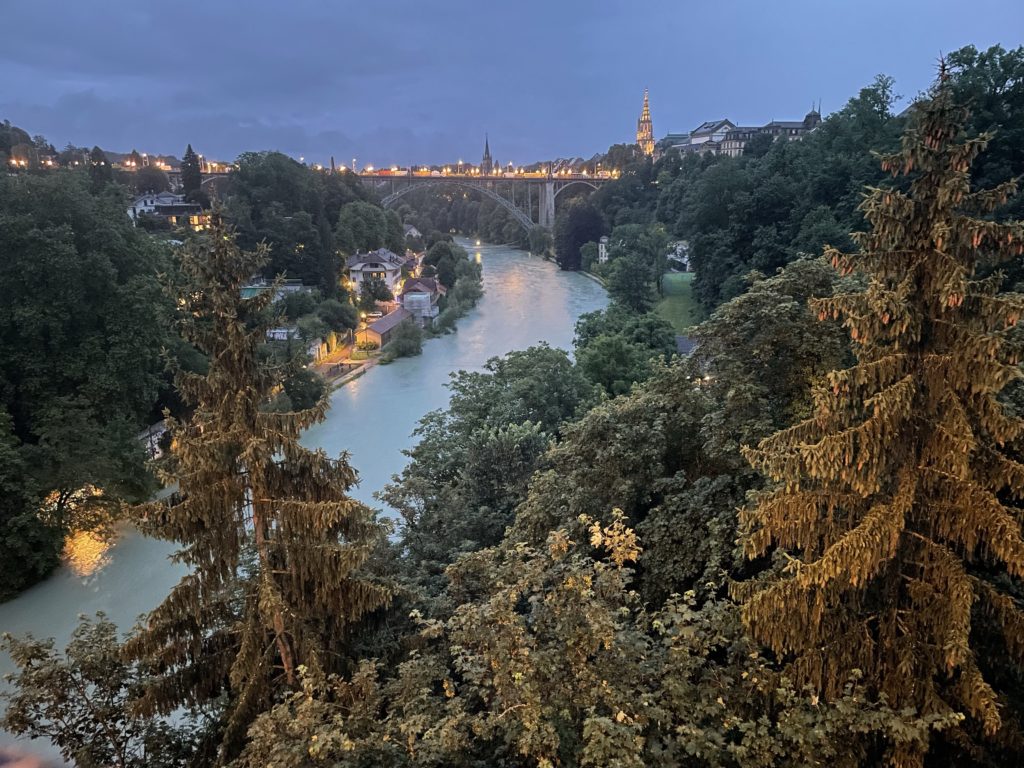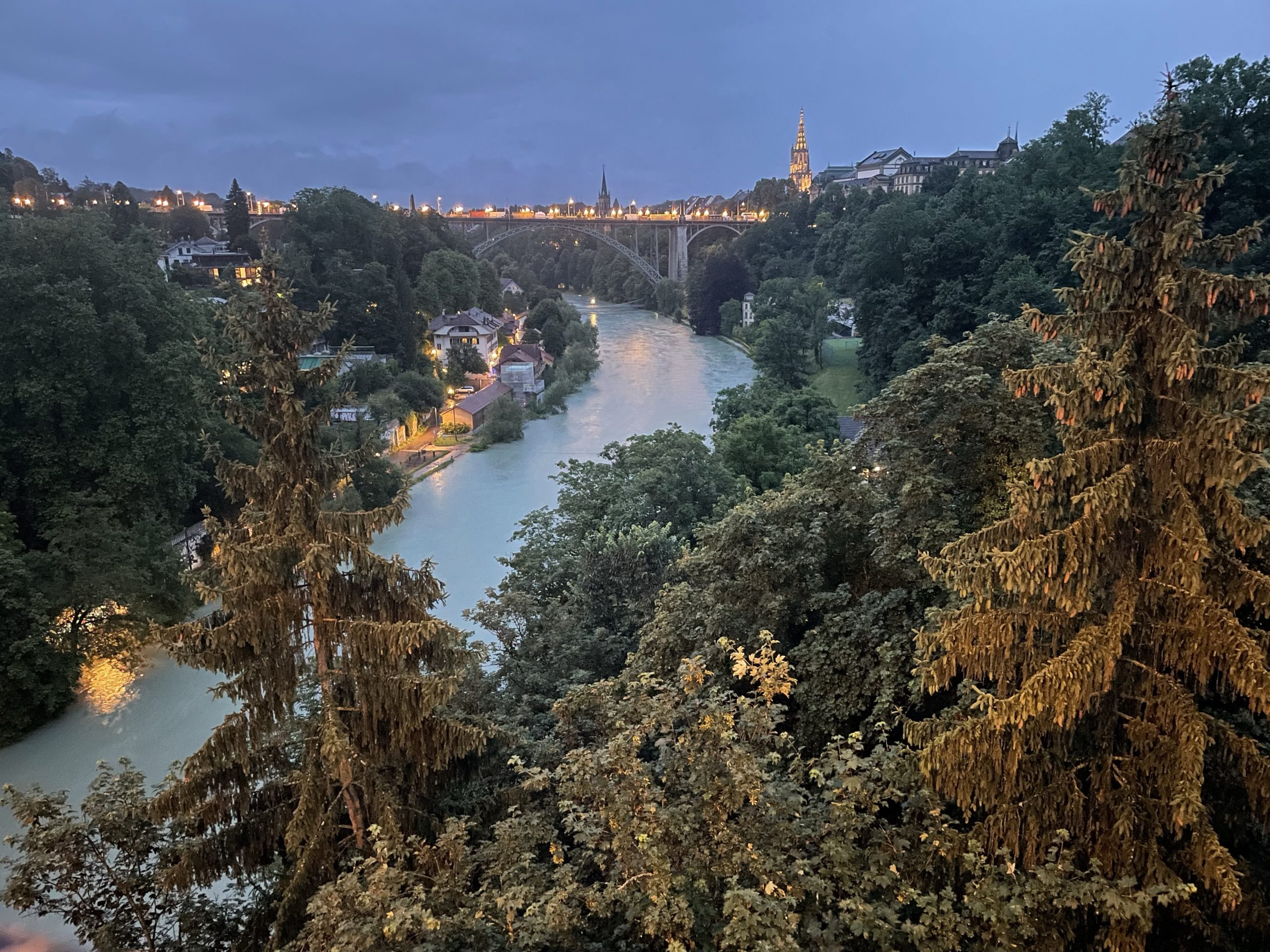July 12-14:
From Salzburg, Austria, we took a train across the northern edges of the Austrian Alps into east Switzerland.
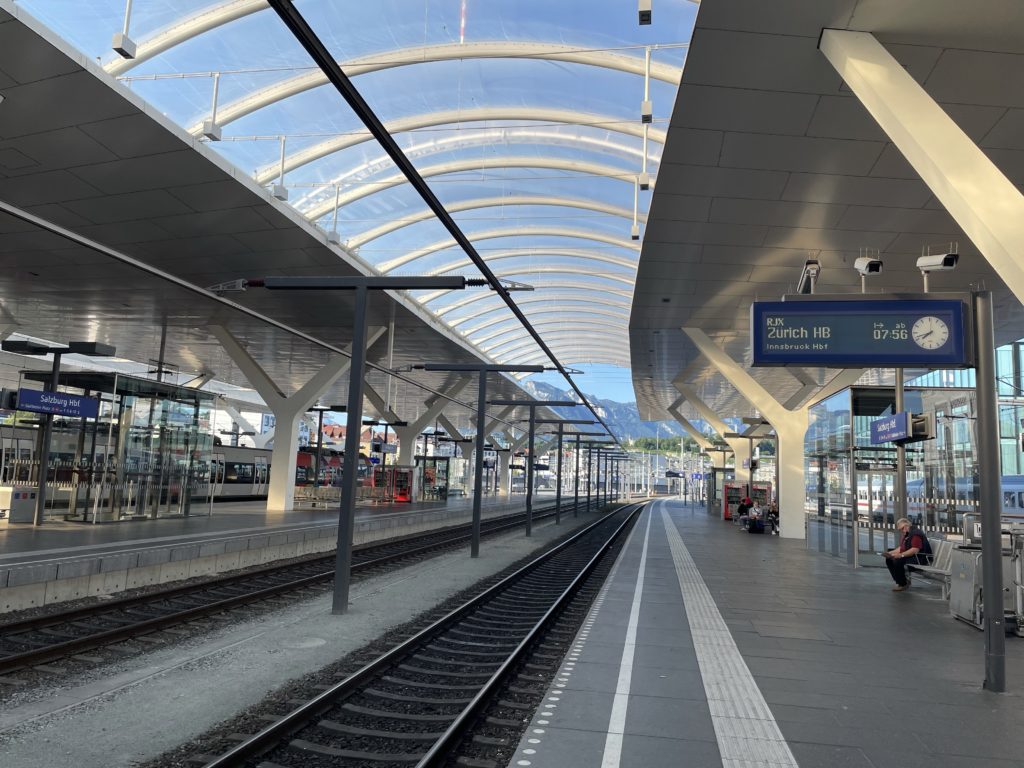
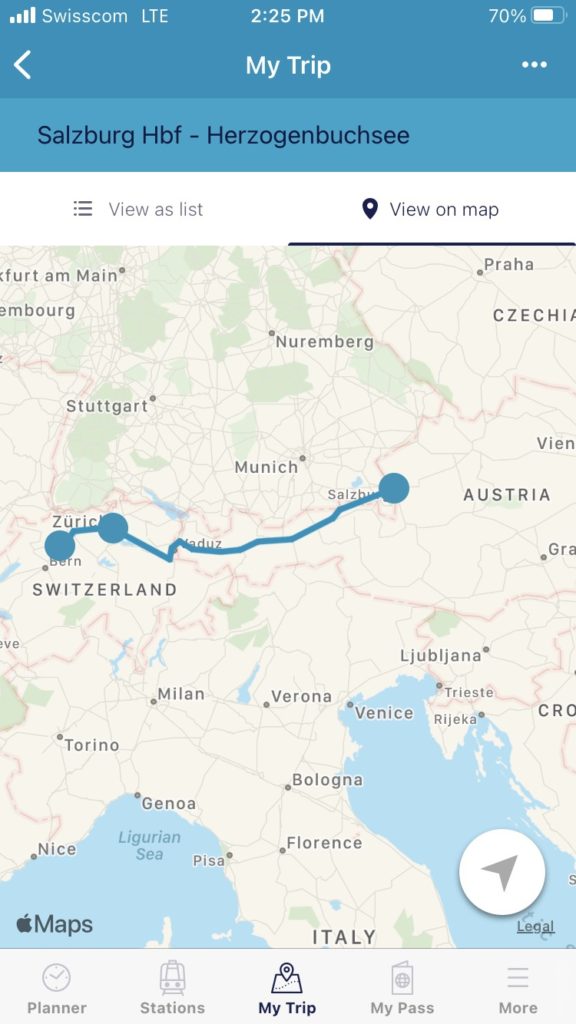
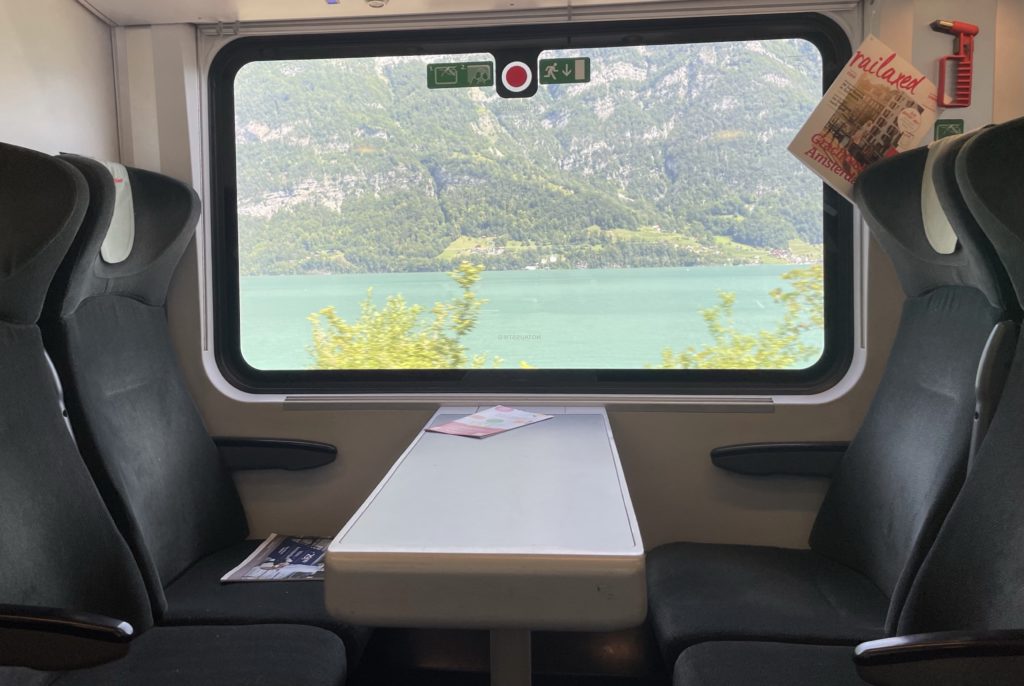
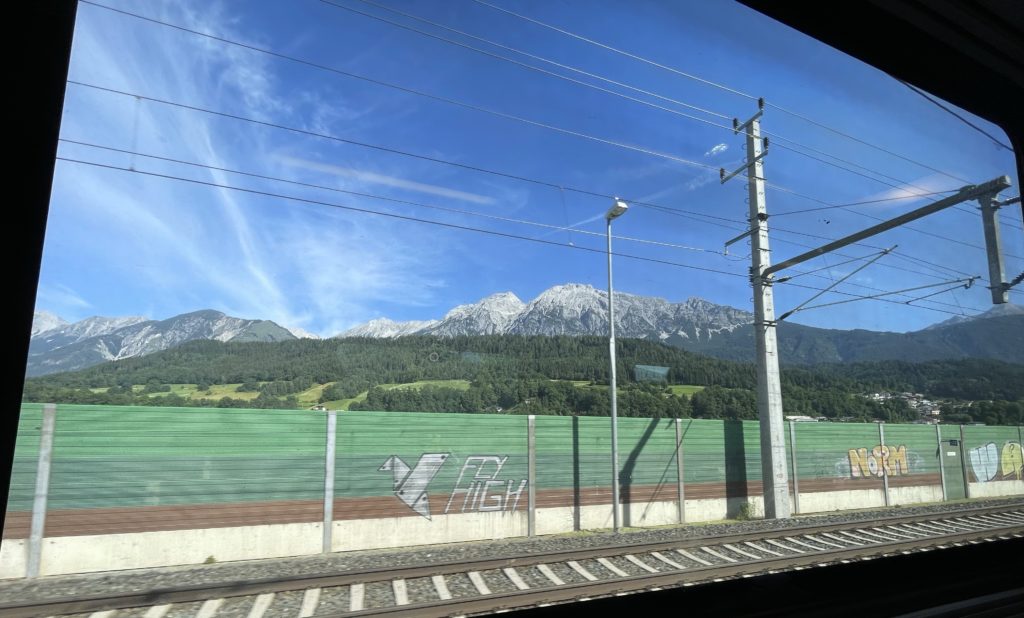
Our AirBnB was located in a small village near Bern, Switzerland. To get there from Austria, we connected in Zurich, Switzerland. It was a 30 minute connection, which was just enough time for us to walk a few blocks of the city – and most importantly, snag some Swiss chocolate with hazelnuts for the rest of our journey!
The Neutrality of Switzerland
Switzerland is such an interesting country. For starters, it’s important to know that they take great pride in their neutrality. For hundreds of years they have remained neutral as the rest of Europe (and the world) wages war around them. They are known for having one of the best-trained militaries in the world, but their aim is to use the military if needed exclusively for defense purposes.
We learned from our host that every man (with able bodies) who is a citizen of Switzerland must sign up for the military and go to bootcamp when they are around 20 years old. Once a year that must return to a location and show they still know how to shoot a gun.
To illustrate the extreme lengths that Switzerland goes to to remain neutral, during World War 2 as the fascist Italian and German regimes expanded their territories in all directions around Switzerland, the people of Switzerland banded together to load all ports of entry into their country with explosives. Train tracks, bridges, tunnels, roadways were all loaded with explosives that could be triggered immediately if there was an invasion, effectively sealing off Switzerland from the rest of Europe. In addition to these explosives, Switzerland also dug extensive tunnels and bunkers deep within the Swiss alps in case they needed to retreat further until the war was over. To this day, it’s common for Swiss homes to have bunkers in their basements. Neutrality at all costs.
Today, Switzerland is one of the tiny few countries in Europe that is not a part of the European Union. They do not use the Euro (they use their own currency, the Swiss Franc). They deliberately choose to stay out of large pacts/unions so that they can maintain their neutrality. In fact, they only just joined the United Nations in 2002! The only other countries to have joined the United Nations after 2002 were countries that have were formed after that point. Here’s a great video we found going more in-depth on Swiss neutrality if you’re as curious as we were!
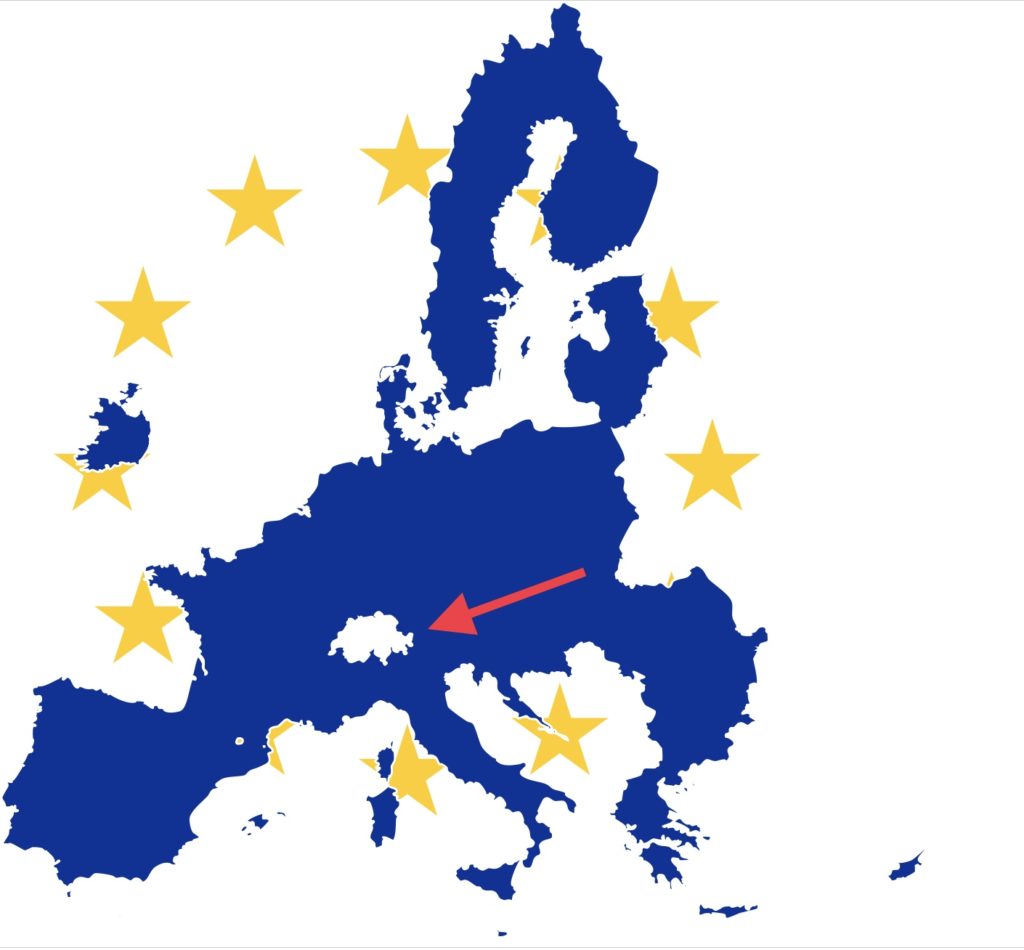
Direct-democracy
The Swiss love their form of government, which they refer to as a “Direct democracy”. The Swiss Constitution was modeled almost directly after the American Constitution and has many of the same principles. One of the main differences between Swiss/American government is that there is no real president of Switzerland. Instead, there is something known as “The Federal Council”, where 7 elected members have equal power and must rule by committee. The “President” of the federal committee just represents the country internationally, but in reality has no significant power. All laws are proposed by a senate/congress, but are all voted on directly by the people. From small village laws to giant national proposals. Direct democracy = the people have a direct say in all matters while also avoiding the cyclical left/right political swings seen in countries like the US, Britain, Germany, etc. It’s a very interesting form of government, and seems to work well for the population size of Switzerland!
Switzerland is also one of the wealthiest countries in the world, perhaps behind only Luxembourg in GDP per-capita. As such, it is extremely expensive! Even for fast food, it’s hard to leave without paying $35-40+ for two people. We thought we could hack the system by shopping at grocery stores instead of going out, but even those are expensive! Teachers make on average $80K+/year in salary, and tech jobs often start at $140K+/year.
Bollodingen
Switzerland is divided into “Cantons” in the same way the US is divided into states – albeit on a much smaller scale. After our connection through Zurich, we found ourselves in the Canton of Bern, in a tiny little town called Bollodingen. Bollodingen is roughly 25 minutes from the capital city of Bern. Only 150 people live here!
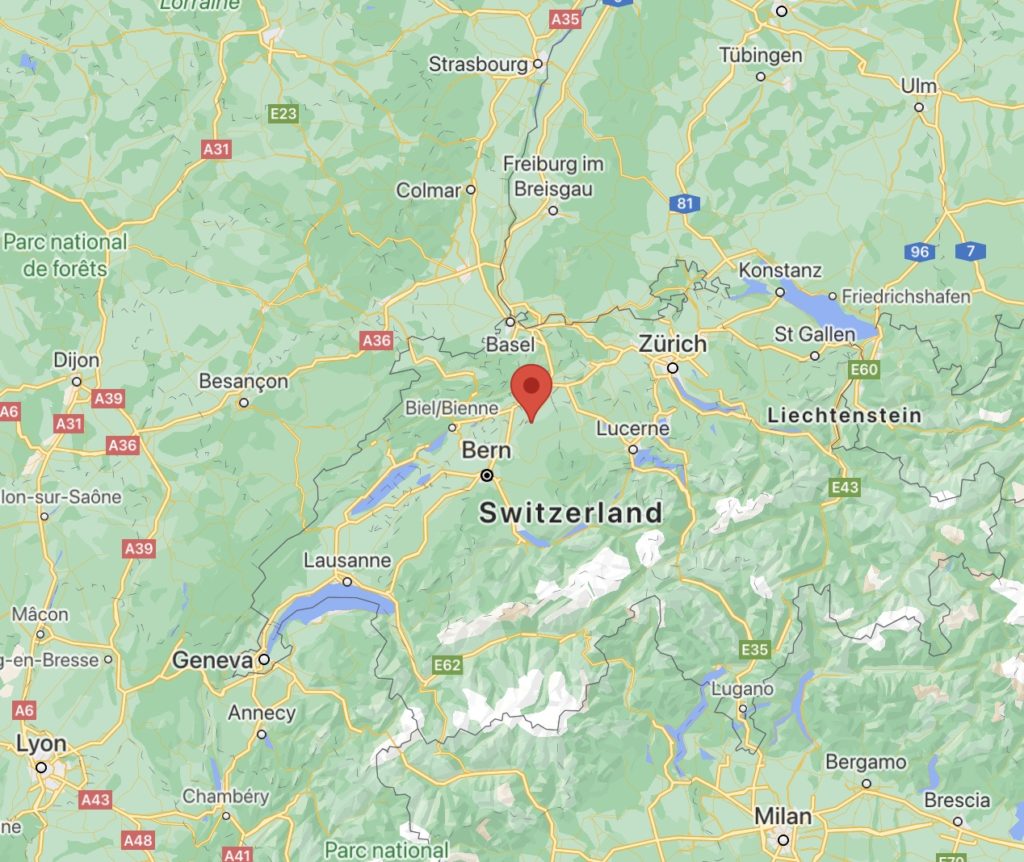
We deliberately chose to stay in this tiny town to have a day of rest where we did absolutely nothing! No sightseeing, no train catching, no new and novel. Just rest. We spent the day catching up on reading, journaling, and reflecting in an AirBnB run by a British family who owned a furniture restoration shop on the ground floor. It was perfect.
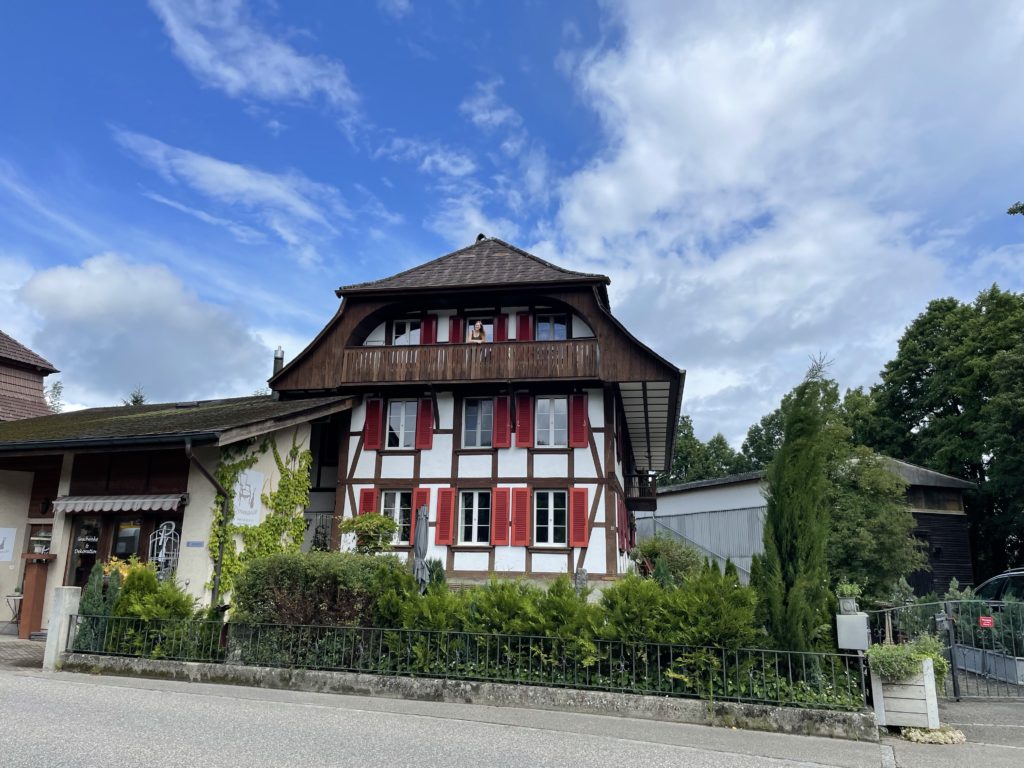
The British family who owned the shop and bed and breakfast were so much fun to get to know! The owners Elaine and David have 3 daughters under the age of 12, and we were able to spend some time with them seeing the Minecraft worlds they’ve built, learning what products they help their mom restore for her shop, and what life is like in Switzerland. The girls really wanted to try some American snacks, particularly a twinky and a pop tart. I had to level-set their expectations a bit on the twinky, but regardless, we’re planning on sending them a snack package when we return to the States. Check out their shop here – they do great work!
Next to their bed and breakfast were some relaxing walking trails that gave us the ability to walk, think, and reflect.
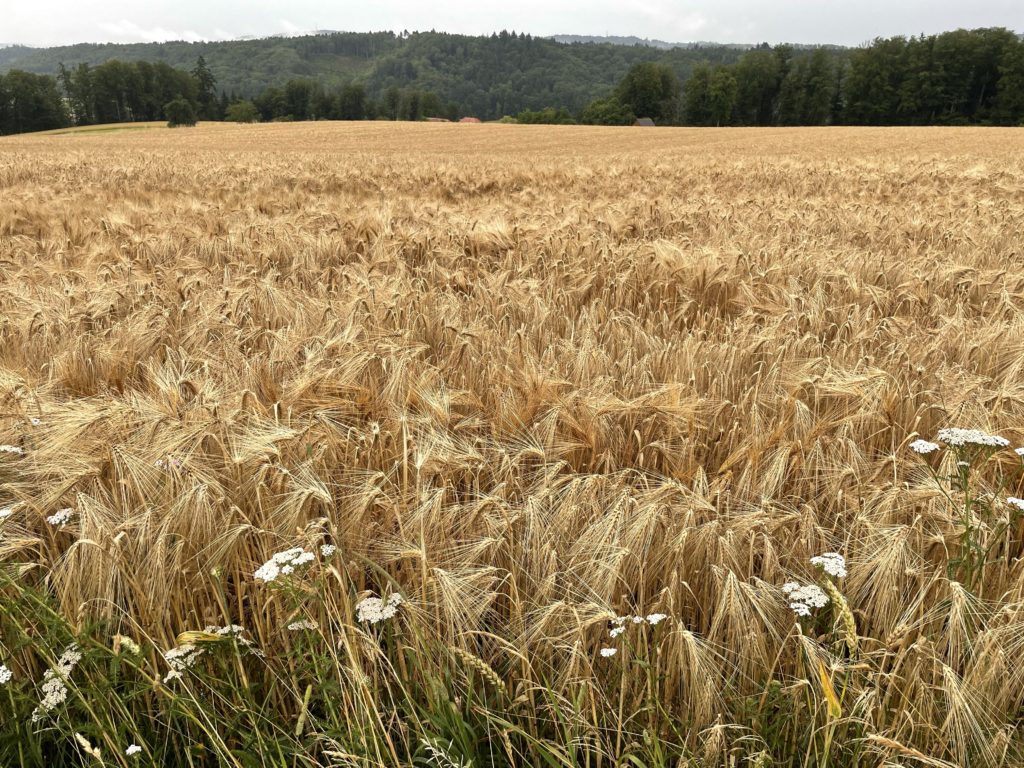
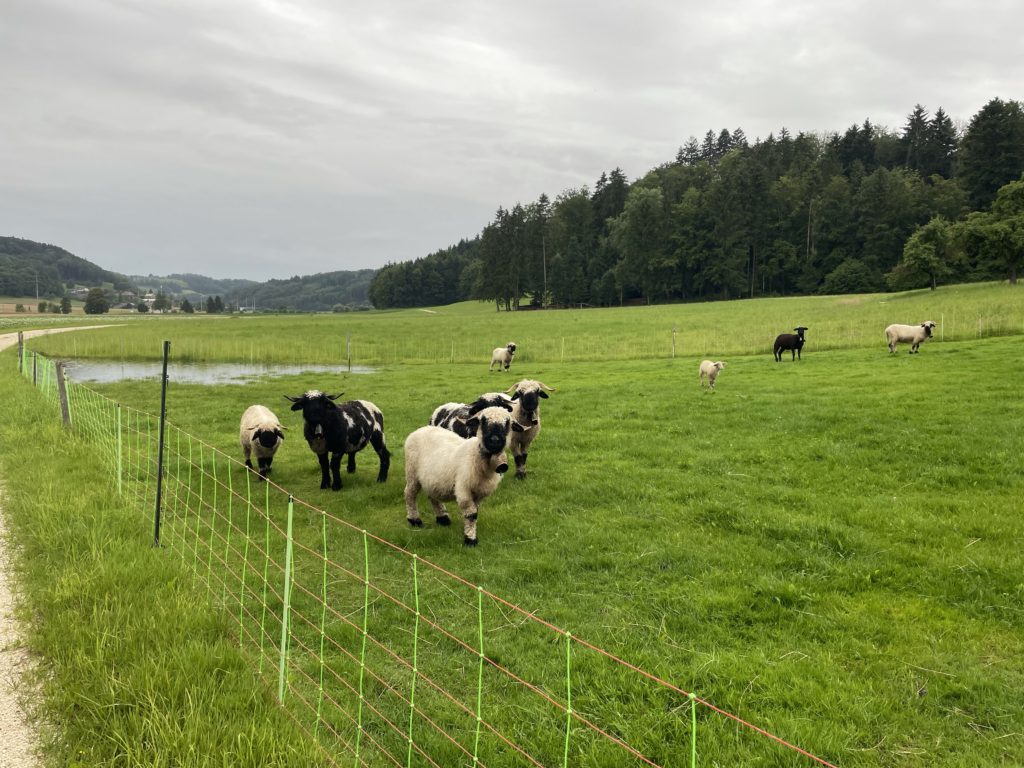
Bern
From the simple pleasures of Bollodingen, we took a quick 25 minute train to the bustling capital of Switzerland, the city of Bern.
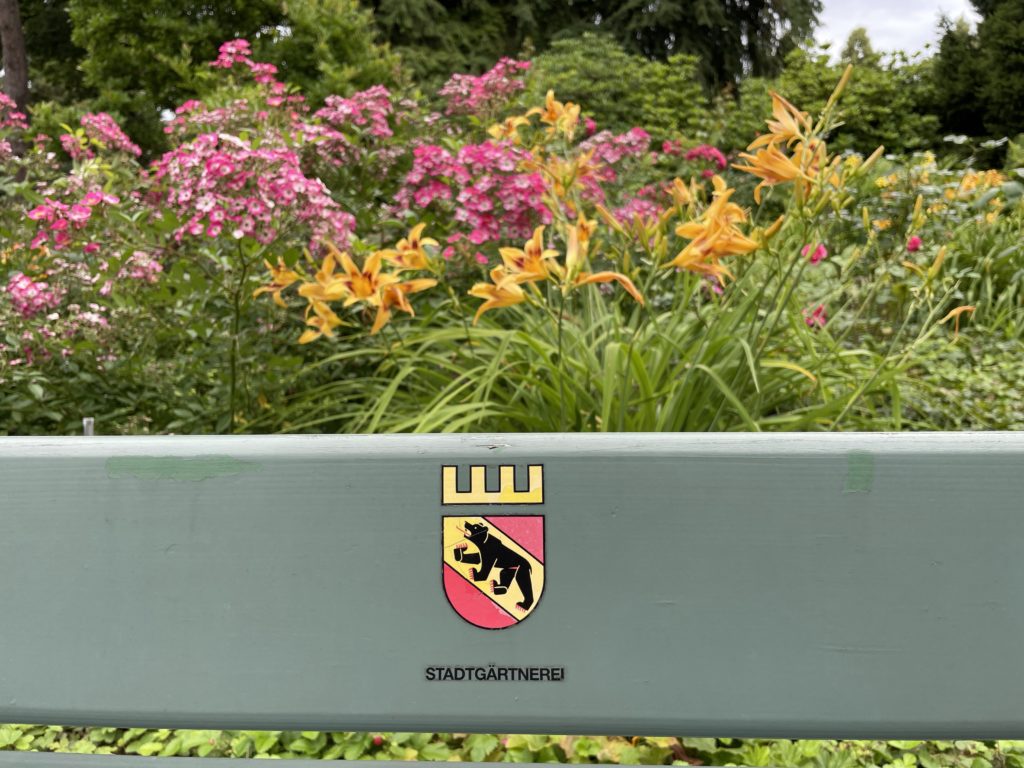
Old Town is a district in Bern that looks like it jumped directly out of a history book. It looks the same as it did in Medieval times, just with a few modern modifications (courtesy of Ronald McDonald). It was so cool walking on the rough cobblestones down the street and imagining what life was like in Medieval times.
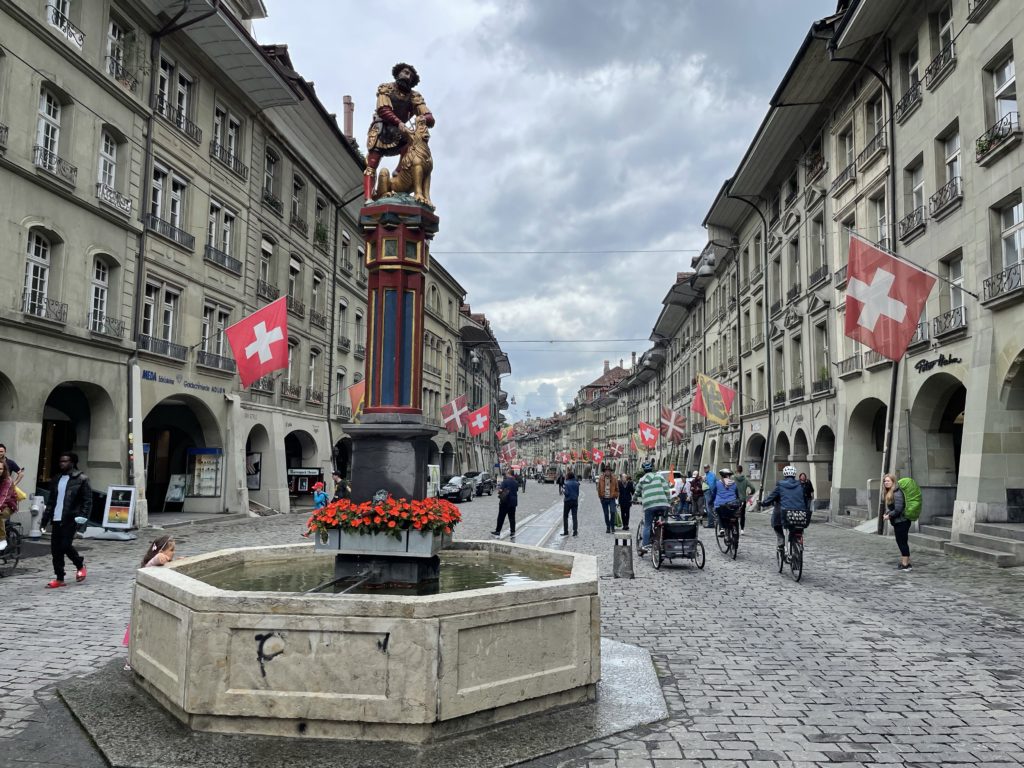
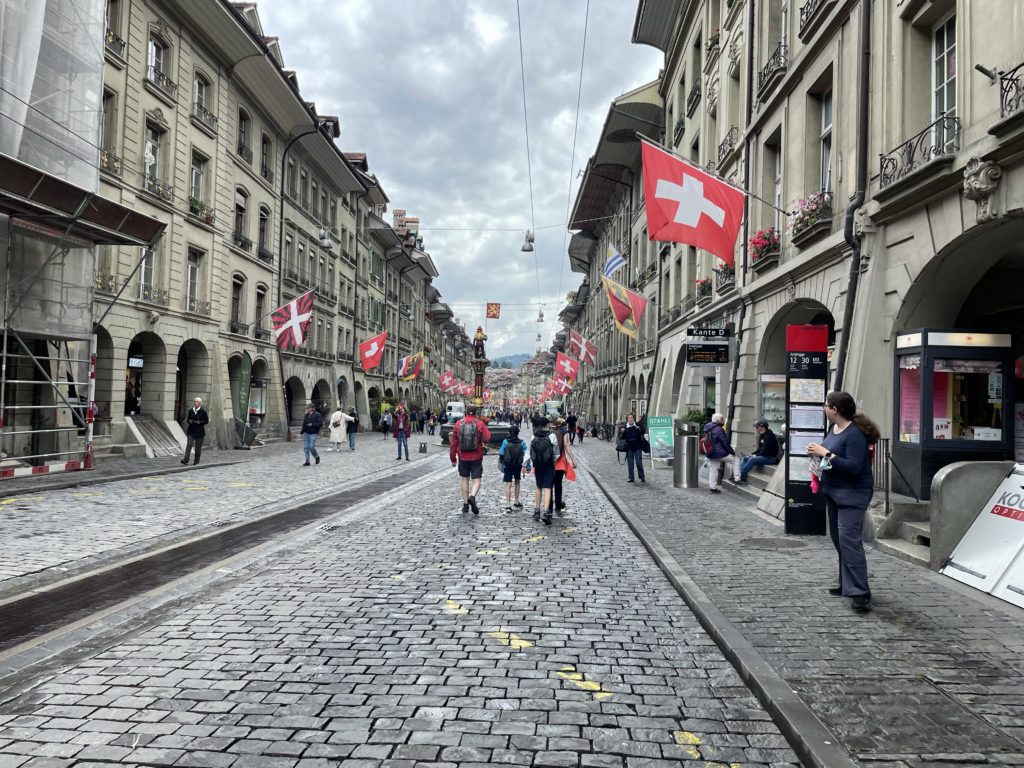
It was in this exact area of Old Town, Bern that Einstein not only lived, but where he developed the theory of relativity. You can tour his old house for a little fee – Lizzie and I opted to just ogle from the outside for free. It was incredible to imagine him strolling these streets, or postulating the theory of relativity as the warm sun streamed into the very same windows Lizzie and I were looking into.
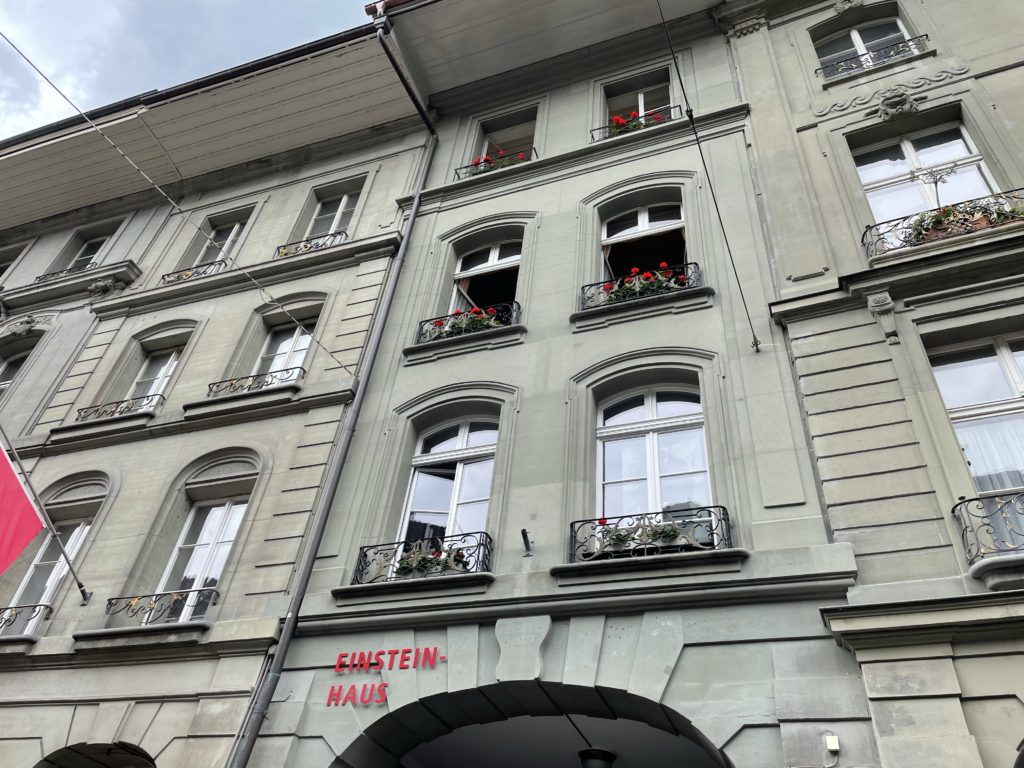
For hundreds of years, one of the great prides of folks who live in Bern are the bears that live in the city. Yes, real bears! The symbol of Bern reflects this pride, and everywhere you go you see the bear-emblem on flags waving from businesses and homes. Since the 1500s, bears have been kept in special pits around the downtown areas of the city. Originally they were first brought to Bern as spoils from military conquests. Today, the “bear pits” are essentially mini zoos on the outskirts of the city, but they still host brown bears that you can see on any given day.
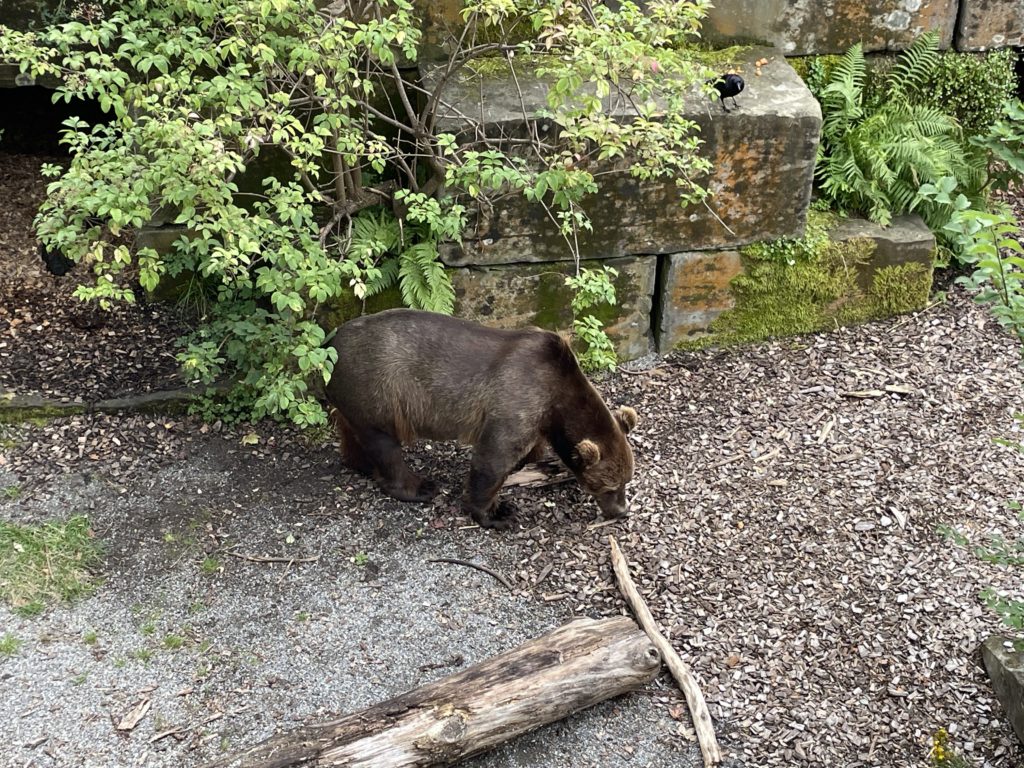
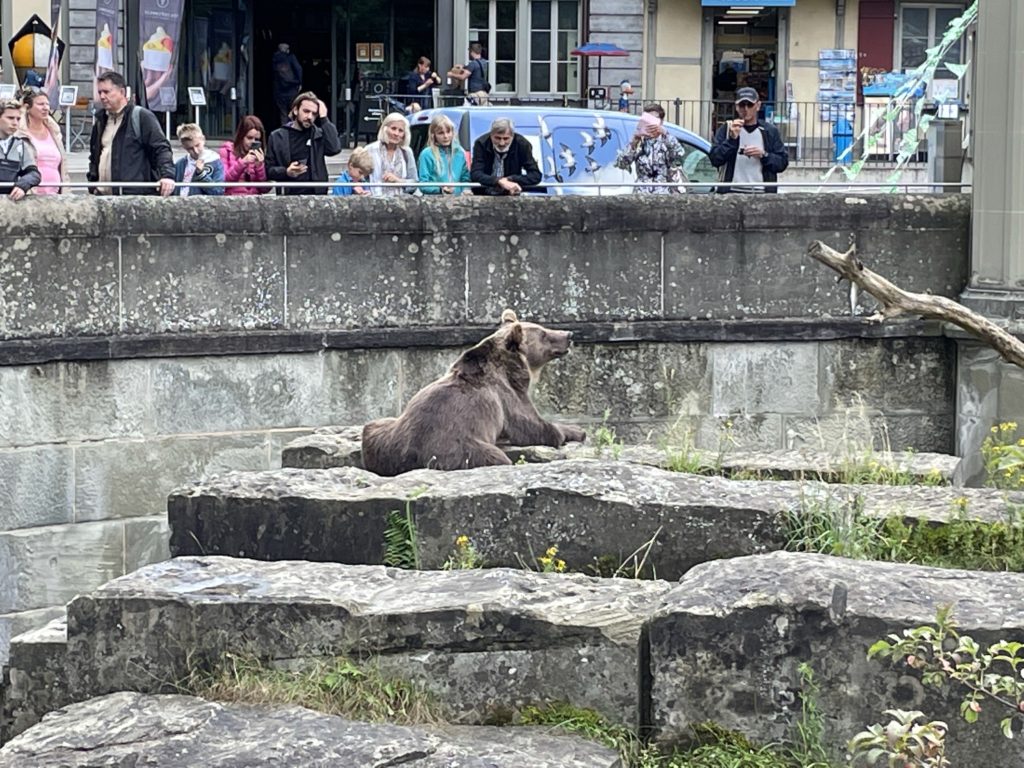
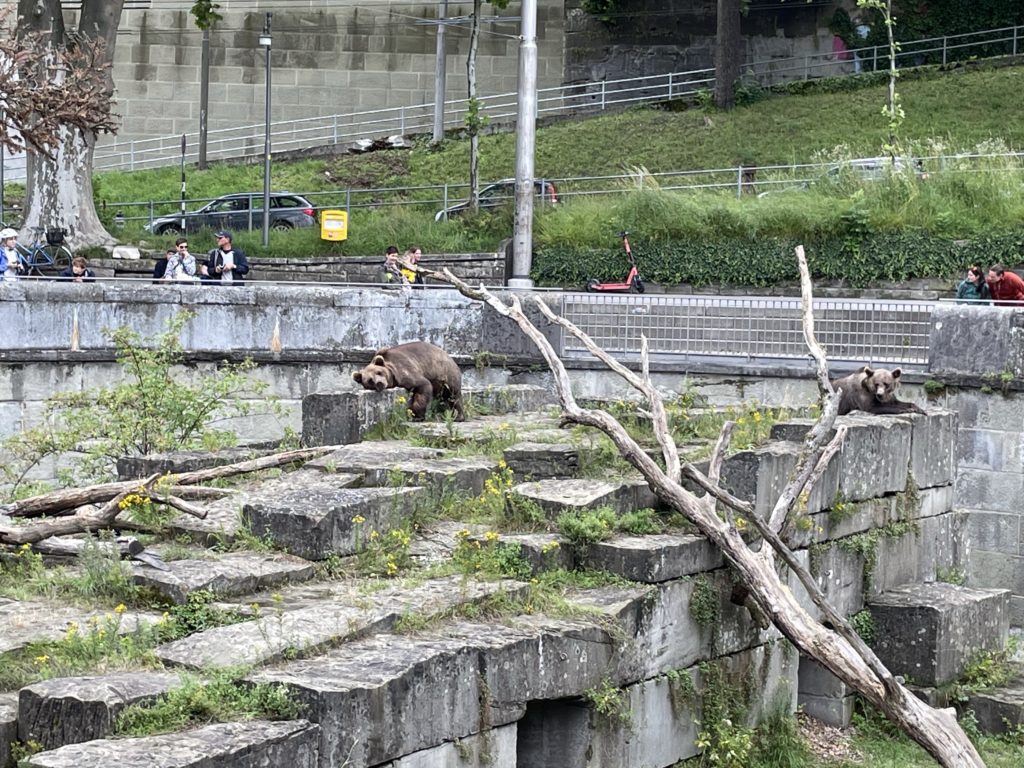
Farewell Switzerland!
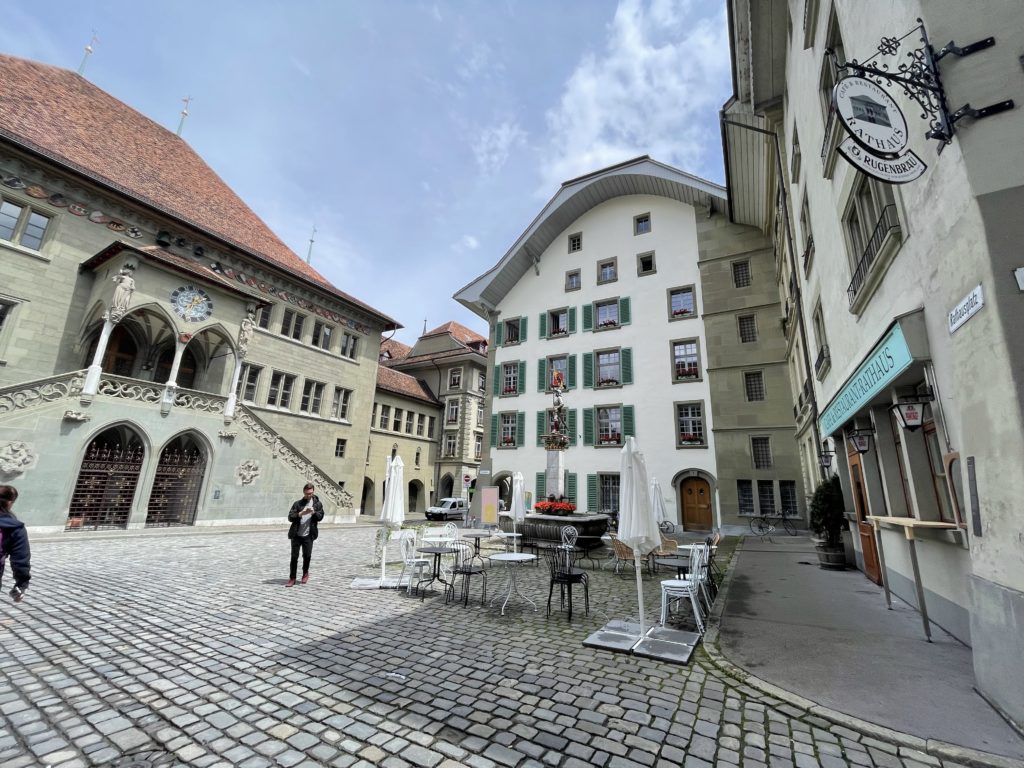
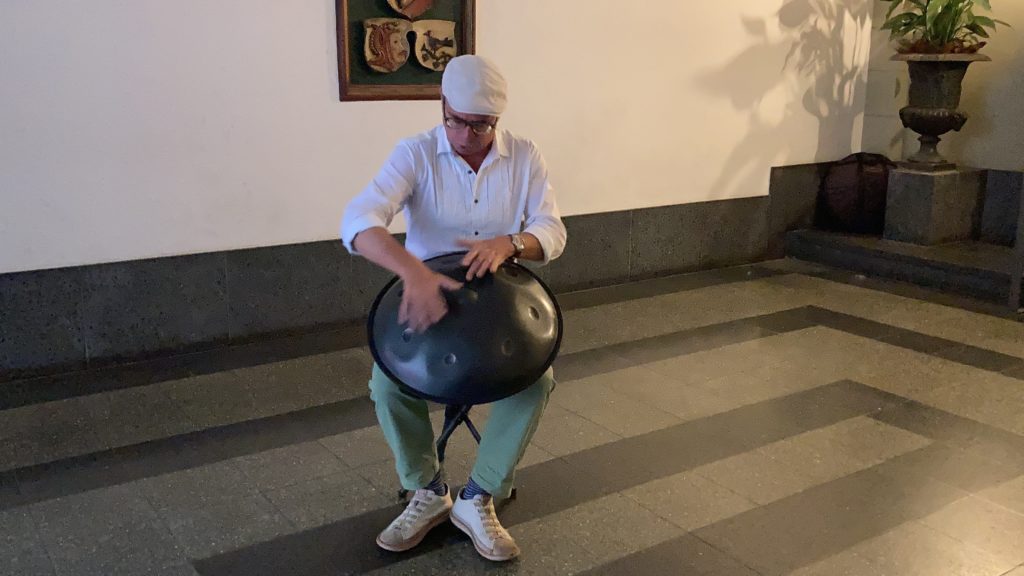
Bern is a beautiful city that we thoroughly enjoyed visiting. We discovered Switzerland at large to be one of our favorite countries that we have been able to visit so far. We particularly enjoyed the quiet countryside near Bern and can’t wait to one day return.
